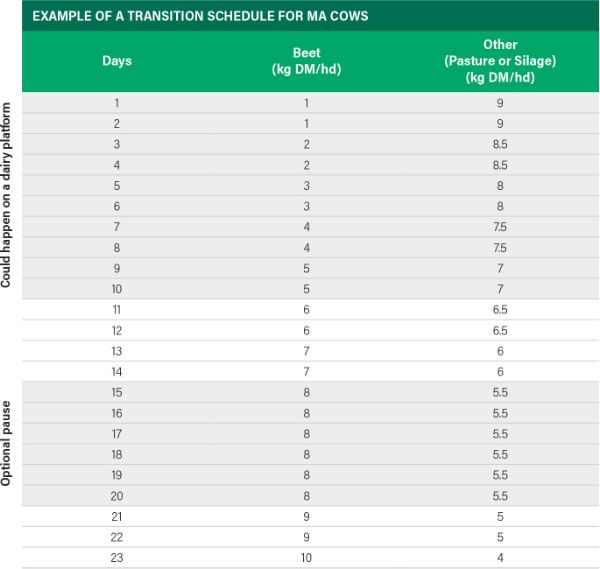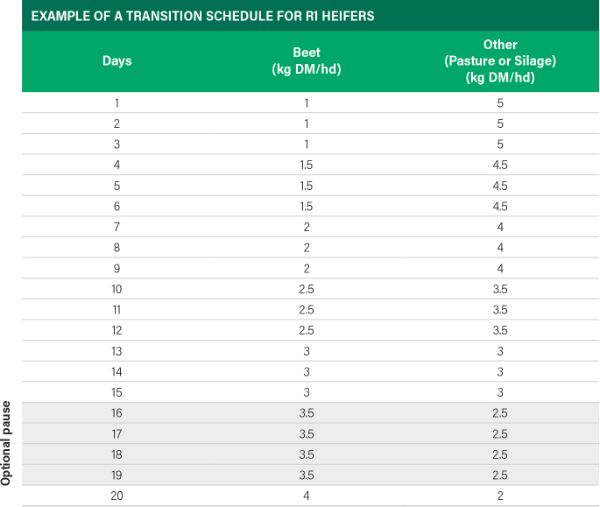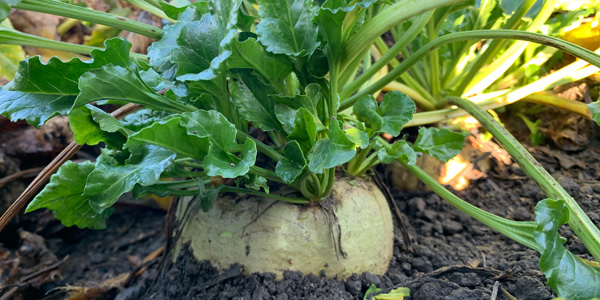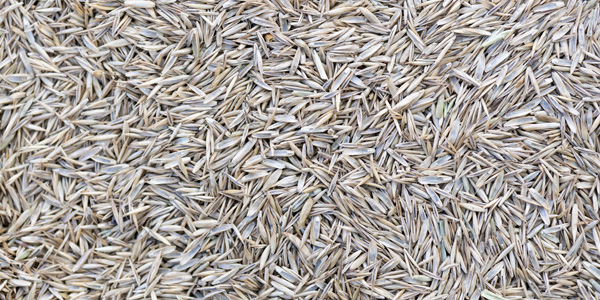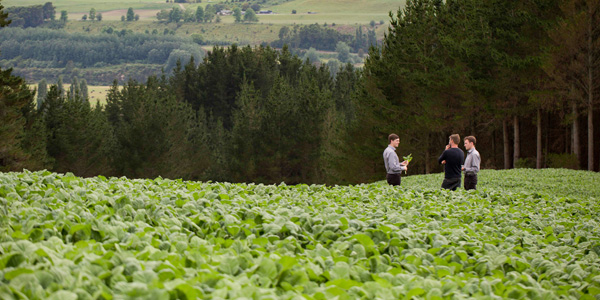
Grazing & Transition Tools
Grazing & Transition Tools
Fodder Beet Management
Grazing Checklist
24-28 weeks Post-Sowing
- Undertake accurate crop yield assessment as close as possible to grazing and in the area to be grazed first (see Drymatter Variation, 'Bolters' and Measurement)
- Calculate allocation based on the diet and transition plan (see examples below)
- Ensure adequate supplement feed is available – the quantity and quality of the supplement will be determined based on the aim of the crop
- Ensure stock have enough space along the face to encourage all stock to get similar fodder beet quantities. A long narrow face is advised to increase accuracy of allocation and the required space for stock to have equal access to crop
- Use your transition planner to determine the amount of fodder beet offered daily and the increase up to the desired allocation. Ensure that stock have access to palatable supplement before fodder beet to reduce the chance of stock gorging
- Monitor stock closely for any health issues – remove and treat if required. Such symptoms may include (but not be limited to):
- Foamy faeces, contains gas bubbles
- Limited cud chewing (<50% of cows lying down not chewing their cud)
- Faeces in the same feed group varies from firm to diarrhoea
- When crop is nearing completion, transition stock off. This involves reducing the proportion of crop in the diet in 3 equal steps over 7-10 days
Transition Table
| EXAMPLE OF A TRANSITION PROGRAMME AND FINAL DIETS OF FODDER BEET FOR COWS, SHEEP AND DEER SYSTEMS | ||||||
| MA Cows | R2 Heifers/Steers | R1 Heifers/Steers | Ewes/Hoggets/Hinds | Lambs | ||
| Start | Beet | 1-2 kg DM per cow allocated behind a wire |
1 kg DM per animal allocated behind a wire |
0.5-1 kg DM per animal allocated behind a wire |
2-3 hours on the crop | 2-3 hours on the crop |
| Pasture or Supplement | 8-9 kg DM per cow | 7-8 kg DM per animal | 5 kg DM per animal | Access to pasture > 2000 kg DM/ha |
Access to pasture > 2000 kg DM/ha |
|
| Transition | Diet | of crop by 1 kg DM and decrease the supplement allocation by 0.5 kg DM per animal every second day until the final diet is reached for each component. If residuals are accumulating, pause until the allocation is totally consumed |
Increase the allocation of crop by 1 kg DM and decrease the supplement allocation by 0.5 kg DM per animal every second day until the final diet is reached for each component. If residuals are accumulating, pause until the allocation is totally consumed |
Increase the allocation of crop by 0.5 kg DM and decrease supplement allocation by 0.5 kg DM per animal every second or third day until the final diet is reached for each component. If residuals are accumulating, pause until the allocation is totally consumed |
Increase time spent grazing crop by 1-2 hours every second day until the final diet is reached for each component. If residuals are accumulating, pause until the allocation is totally consumed |
Increase time spent grazing crop by 1-2 hours every second day until the final diet is reached for each component. If residuals are accumulating, pause until the allocation is totally consumed |
|
Final Diet (an example) |
Silage at 3 kg DM/hd/d |
Silage at 2 kg DM/hd/d |
Silage at 2 kg DM/hd/d |
Silage at 0.5 kg DM/hd/d |
Lucerne hay at 0.5 kg DM/hd/d |
|
This is a guide only. Accurate allocation is important. The timing of feeding each day needs to be consistent. Regular checks are suggested to identify issues early. Always seek further technical advice.
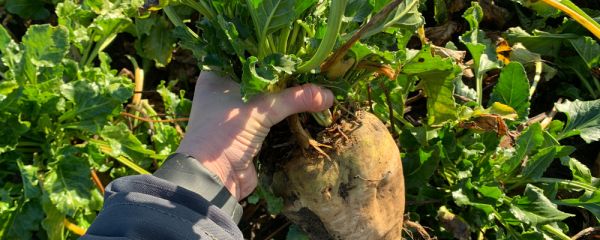
Our Fodder Beet range
VIEW PRODUCTS
Contact our Team
GET IN TOUCH
TOP
